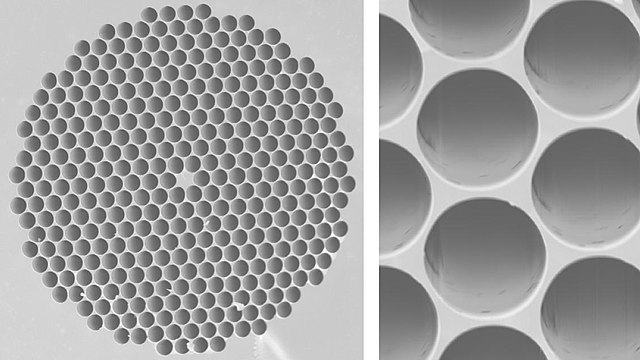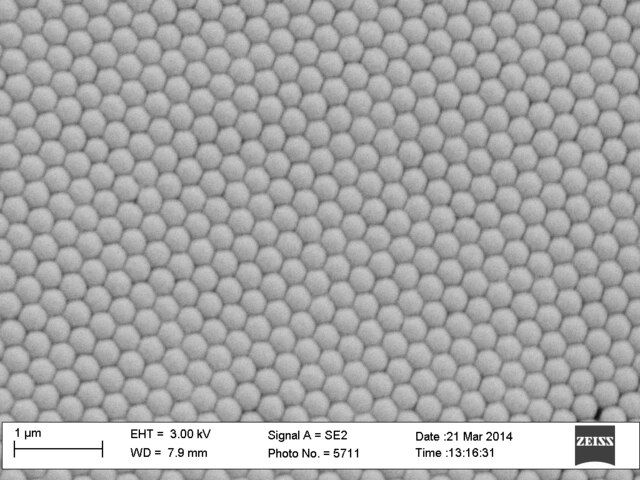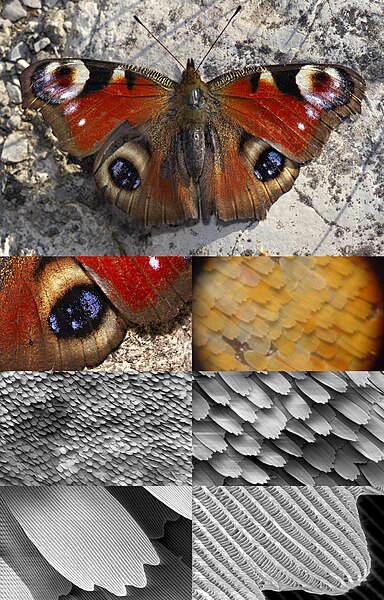A photonic crystal is an optical nanostructure in which the refractive index changes periodically. This affects the propagation of light in the same way that the structure of natural crystals gives rise to X-ray diffraction and that the atomic lattices of semiconductors affect their conductivity of electrons. Photonic crystals occur in nature in the form of structural coloration and animal reflectors, and, as artificially produced, promise to be useful in a range of applications.
The opal in this bracelet contains a natural periodic microstructure responsible for its iridescent color. It is essentially a natural photonic crystal.
Wings of some butterflies contain photonic crystals.
A photonic crystal fiber. SEM images of US NRL-produced fiber. (left) The diameter of the solid core at the center of the fiber is 5 µm, while (right) the diameter of the holes is 4 µm. Source: http://www.nrl.navy.mil/techtransfer/fs.php?fs_id=97
An SEM image of a self-assembled PMMA photonic crystal in two dimensions
Structural coloration in animals, and a few plants, is the production of colour by microscopically structured surfaces fine enough to interfere with visible light instead of pigments, although some structural coloration occurs in combination with pigments. For example, peacock tail feathers are pigmented brown, but their microscopic structure makes them also reflect blue, turquoise, and green light, and they are often iridescent.
The brilliant iridescent colors of the peacock's tail feathers are created by structural coloration, as first noted by Isaac Newton and Robert Hooke.
In 1892, Frank Evers Beddard noted that Chrysospalax golden moles' thick fur was structurally coloured.
Electron micrograph of a fractured surface of nacre showing multiple thin layers
Butterfly wing at different magnifications reveals microstructured chitin acting as a diffraction grating








